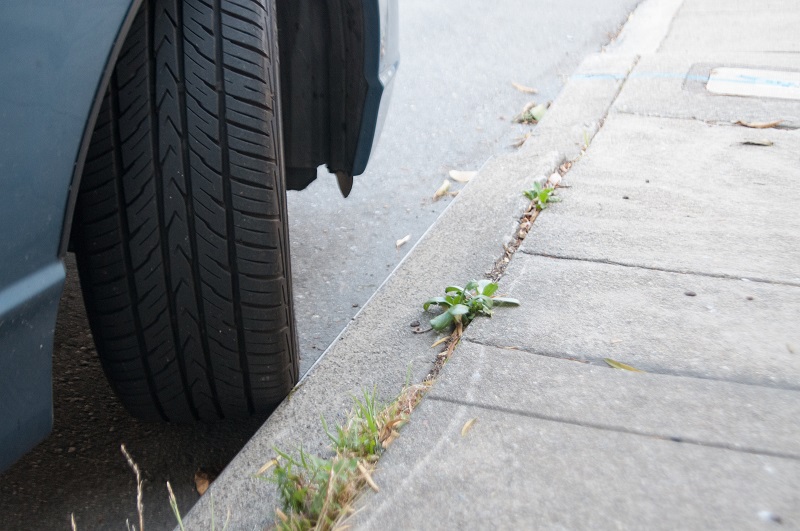
To prevent runaway vehicles, local law requires drivers to curb their wheels when parking on a grade greater than 3 percent (1.72 degrees). Since most of us don’t carry a level to measure how steep a street is, it’s a good idea to make it a habit every time you parallel park.
Why is curbing your wheels so important? If your vehicle is hit, or if the transmission or parking brake fail, curbing will cause your car’s wheels to act as an additional safety defense. In such a scenario, your car will roll into the curb, and not into people, traffic or other objects. If you do not curb your wheels, you are subject to a fine (PDF).
Tips to Curb Your Wheels Safely and Legally
- Whether you park your vehicle facing uphill or downhill, the rule of thumb is to turn your wheels so that the weight of the car will roll them towards the curb. If you’re not sure which way your car is sloped, set the car in neutral and see which way it rolls.
- If you’re faced downhill, turn your front wheels towards the curb.
- If you’re faced uphill, turn your front wheels away from the curb and let your vehicle roll back until it gently touches the curb.
- If you park on a sloped driveway, turn your wheels so the vehicle will not roll into the street and, again, make sure to set your parking brake.
A related note: When parking parallel, your wheels must also be within 18 inches of the curb.
By the way – if you do want to confirm the grade of a street, you can take a look at the SF Public Works Street Grade Map.
Our “San Francisco Parking Tips” blog series explains some of the lesser-known rules listed in the SFMTA’s new Streets of San Francisco Parking Guide (PDF). It’s part of the SFMTA’s effort to make it easier for locals and visitors to understand and follow the rules of on-street parking.